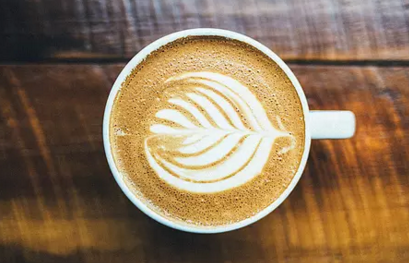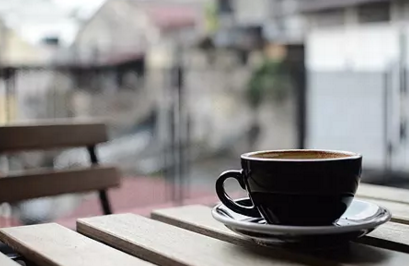Popularization of coffee knowledge | some common sense about coffee
The word "Coffee" comes from a small town in Ethiopia called kaffa, and in Greek "Kaweh" means "strength and passion". Coffee, tea and cocoa are called the three major drinks in the world. Coffee tree is a small evergreen tree of Rubiaceae, which is found in the tropics and subtropics. Next, the knowledge of coffee will be popularized to you. Let's have a look.
I. the history and culture of coffee

The Story of the Shepherd
There was a shepherd in Ethiopia in the 16th century. One day he found his sheep bouncing and bouncing. He thought it was very strange. After careful observation, he realized that the sheep had eaten only one kind of red fruit. So he took the fruit and distributed it to the monks in the monastery, all of whom felt refreshed after eating it. It is said that the fruit was used as a pick-me-up medicine and was well received by doctors.
Arab monks
In 1258, Shek Omar, the chief expelled by his people for crime, was too hungry and tired to walk any longer when he wandered to Vasaba (in Arabia), far from his hometown of Mocha. When he was resting on the root of a tree, he found a bird coming and perched on the branch, singing in a melodious voice he had never heard before. When he looked closely, he found that the bird opened its throat and made a wonderful cry after pecking at the fruit on the branch, so he picked all the fruit in the area and boiled it with water. After that, he began to exude a strong fragrance. After drinking it, he not only felt good, but also felt tired physically and mentally. So he picked many of these magical fruits and brought them soup to drink whenever there were patients. finally, because of his good deeds everywhere, the people in his hometown forgave him for his sins, let him go back to Mocha, and respected him as a "saint".
A romantic story
One of the most romantic stories about coffee is about Gabriel, a French naval officer on the island of Matinique. Mathieu. De. Klee's. When he was about to leave Paris, he managed to get some coffee trees and decided to take them back to Martinique. That's about 1720 or I723. He may also have traveled back and forth twice, because the first inoculation did not survive. To be sure, in the end, virtue. Klee set sail from Nantes with one of the best saplings that had been carefully cared for. The saplings are kept in a glass box on the deck, which can prevent sea water from splashing and keep warm. De. Kerry's diary describes how his ship was threatened by Tunis pirates and how he survived a storm. The diary also mentioned that there was a man on board who was jealous of him in an attempt to destroy the young tree and even broke a branch in a struggle. Then the boat ran aground and the drinking water could not be sufficient, so Dirkley watered the saplings with the water he drank.
About the origin of the name "coffee"
All historians seem to agree that the birthplace of coffee is Kaffa in Ethiopia, while the name for coffee comes from the Arabian "Qahwah" meaning plant drink that later spread around the world and was named after its place of origin, "KAFFA", which was not officially named "coffee" until the 18th century.
Origin
There is no way to examine the source of coffee. One of the many legends is that coffee originated in the highlands of Cafa province in southwestern Ethiopia. It is said that a shepherd became very excited and lively when he discovered that the sheep had eaten a plant, so he discovered coffee. It is also said that due to a wildfire, a coffee forest was destroyed and the smell of barbecue coffee attracted the attention of the surrounding residents. The people chewed the fruit of this plant at first to cheer them up, then baked and ground it into flour to make bread, which was used as food for warriors to improve their courage to fight. It was not until around 1000 AD that people began to use boiled coffee as a drink. In the 13th century, Ethiopian troops invaded Yemen and brought coffee to the Arab world. Because the Islamic doctrine forbids people to drink alcohol, some religious people think that this drink stimulates the nerves and violates the doctrine. For a time, coffee shops were banned and closed, but the Sultan of Egypt thought that coffee did not violate the doctrine and ordered the ban to be lifted. Coffee drinks quickly became popular in the Arab region. The word Coffee, which comes from Arabic (Qahwa), means "plant drink". It later spread to Turkey, became Kahve, and became the source of the word in European languages. The method of growing and making coffee has also been continuously improved and perfected by the Arabs.
Second, the basic efficacy of coffee

It is decided that the characteristic of ─ coffee is four flavors and one fragrance.
All the color, aroma and taste of coffee are characterized by some chemical changes in raw coffee beans after baking.
◎ bitterness: caffeine, one of the basic flavor elements of coffee.
◎ sour taste: = = tannin acid, the second basic flavor element of coffee.
◎ strong alcohol: = = strong coffee, aromatic mellow taste.
◎ sweetness: when the sugar in the raw beans of coffee is partially coked after the roasting process, the rest is sweet.
◎ aroma (coffee aroma): fat, protein and sugar in raw beans of coffee are important sources of aroma.
What is the attractive charm of coffee?
Its appropriate bitter taste, fragrant mellow, plus the charm of caffeine. Coffee can reduce the risk of Alzheimer's disease and Alzheimer's disease. Coffee can also reduce the risk of Parkinson's disease. Coffee can improve short-term memory and IQ. Coffee can also reduce the risk of diabetes. Coffee can reduce the risk of liver cirrhosis and heart disease. Tannic acid in coffee can reduce the ability of food to cause dental caries.
Third, the cultivation techniques of coffee

First, planting time: April 15-25 period.
Second, planting location: plain, hillside, wasteland, front and back house, forest and fruit tree seedlings can be planted, but should not be planted in tall trees or other unventilated places.
Third, herbal coffee does not like flood and fertilizer, conditional planting can use farm manure, during the growth period, it is best to irrigate 1-2 times of water during the growth period, and all kinds of chemical fertilizers and herbicides are absolutely not allowed.
Fourth, the growth habits of coffee beans like warmth, drought tolerance, not cold tolerance, afraid of frost damage, seedlings and adult plants are easily defoliated to death by frost, seeds can not mature. Coffee beans are not strict on land, and idle land can also be planted, but it is suitable for sandy soil with good drainage, deep soil layer and loose and fertile soil.
5. Planting techniques
Seed selection: the germination rate of seeds should be tested before sowing. Specific method: divide the full seeds into several parts, number them in turn, take out 125 to 250 grams in each part and put them into corresponding numbered utensils, soak them in warm water for about 50 ℃ for one day and night, pour out the water, rinse it again with clean water, then cover it with a wet cloth to maintain humidity, sprout after three days, and select those with a bud rate of more than 85% as seeds.
Soil preparation: in the selected plots, 2000-2500 kg of ring fertilizer and 25 kg of superphosphate are applied per mu, which are evenly scattered on the ground, ploughed and raked fine and leveled, and generally do not make beds. If a bed is made, it can be made into a flat bed 1.2 to 1.5 meters wide.
Sowing: soak the superior seeds selected by the test in 50 ℃ warm water for one day and night, wait for them to absorb water to expand, fish out the dry surface, and sow seeds. The sowing time is from Qingming Festival to Grain Rain (mid-April), when the air temperature is 15-20 ℃, it is too early, the ground temperature is low, the seeds are easy to rot in the soil, and too late, the seeds can not mature, affecting the yield and quality. Sowing with strip sowing is appropriate, row spacing 50-70 cm, open 5-6 cm deep ditch, spread seeds evenly in the ditch, cover soil 3 cm, slightly suppress, and emerge about 10 days after sowing. If there is a drought in the north, it is necessary to irrigate before sowing, not to water after sowing, so as to avoid topsoil consolidation affecting seedling emergence.
IV. Classification of coffee

Types of coffee beans
There are mainly two kinds of coffee on the market, such as Coffea Arabica and Coffea Robusta. Each of them can be subdivided into more variety branches. Most of the coffee beans in circulation on the market are distinguished by their origin. Here are some of the main producing countries and their famous coffee: Ethiopia (Ethiopia): Harrar, Yirgacheffe, Djimmah Kenya: Kenya AA, Tanzania: Kilimanjaro Indonesia: Mantenin, Java, Brazil: Santos (Santos) Jamaica: blue Mountain Colombia: Costa Rica: Tarazu (Tarrazu) Guatemala: Antigua (Antigua), Huehuetenango, Mexico, Puerto Rico: Yauco Selecto Panama, Cuba: Cubita USA: Kona.
Types of coffee drinks
Many varieties of coffee served by coffee shops have a variety of flavors, such as chocolate, wine, mint, cloves, lemon juice, cream, etc., and people of different nationalities have different tastes of coffee. Here are some common types of coffee
Black coffee: also known as "black coffee", contains only coffee espresso: or espresso (Espresso), brewed with hot water under high pressure into a very fine coffee powder. Drip coffee: pour hot water into the coffee and filter the coffee liquid through a disposable drip filter. Cappuccino: also known as "milk coffee", steam-pressurized espresso plus foamed milk, sometimes with cinnamon, spices and chocolate powder. Usually coffee, milk and milk foam each account for 1 stroke 3 lattes: steam pressurized espresso with the same proportion of hot milk seasoned coffee: according to local tastes, add chocolate, syrup, juice, cinnamon, nutmeg, orange blossom and other different seasoning mocha coffee: add chocolate, milk and stirred cream to the coffee Sometimes add iced Ole coffee: regular coffee with lots of hot milk and sugary American coffee: espresso with lots of hot water. Softer than regular espresso Irish coffee: add whisky to the coffee and top with cream Vietnamese coffee: pour the coffee into a metal filter, put ice cubes and condensed milk in the cup, and let the coffee drip directly on the ice.
Important Notice :
前街咖啡 FrontStreet Coffee has moved to new addredd:
FrontStreet Coffee Address: 315,Donghua East Road,GuangZhou
Tel:020 38364473
- Prev

Coffee shop order guide, share the rising posture together, no longer annoy the barista
In many cases, when we go to a coffee shop, we don't know the composition of each drink, especially when many friends have been nurtured by instant coffee for many years. Under this premise, we don't know how to order a cup of coffee that suits us. It is easy to have the following situations. For example, if a barista sees such guests, he will have thousands of them in his heart.
- Next

Coffee AROUND THE world
Coffee hot, coffee salon video column, focus on dry goods and video combination, in the text explosion today, perhaps video information is more suitable for you oh! Today, I would like to share with you 9 coffee drinks from different countries and regions in the world, which fully reflect the characteristics of beverages in various regions and are also simple and easy to understand. They are suitable for special drinks in cafes and home production. Friends who like fancy creative coffee cannot
Related
- Beginners will see the "Coffee pull flower" guide!
- What is the difference between ice blog purified milk and ordinary milk coffee?
- Why is the Philippines the largest producer of crops in Liberia?
- For coffee extraction, should the fine powder be retained?
- How does extracted espresso fill pressed powder? How much strength does it take to press the powder?
- How to make jasmine cold extract coffee? Is the jasmine + latte good?
- Will this little toy really make the coffee taste better? How does Lily Drip affect coffee extraction?
- Will the action of slapping the filter cup also affect coffee extraction?
- What's the difference between powder-to-water ratio and powder-to-liquid ratio?
- What is the Ethiopian local species? What does it have to do with Heirloom native species?

